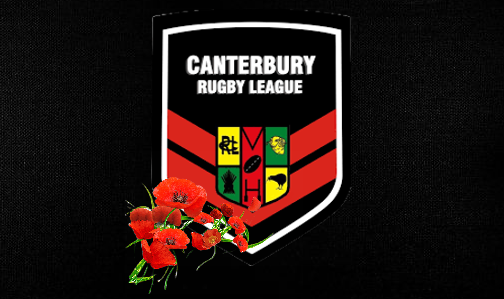CANTERBURY RUGBY LEAGUE’S ANZACS: FIVE LOST AT GALLIPOLI
April 25, 2023 marks 108 years since the landing of troops, predominantly from the Australian and New Zealand Army Corps (ANZAC), at Gallipoli Peninsula less than nine months after the beginning of the First World War.
An estimated 1,000 ANZAC troops lost their lives fighting Turkish forces that day, while the Department of Veteran Affairs records the number of dead from the campaign, which lasted until January 1916, at 8,709 Australians and 2,721 New Zealanders.
Since 1916, Anzac Day has been celebrated on April 25 to broadly commemorate all Australians and New Zealanders “who served and died in all wars, conflicts, and peacekeeping operations” and “the contribution and suffering of all those who have served”. It is a day close to the hearts and inherent to the national identities of both countries – and for rugby league, it is also a solemn day steeped in tradition.
Few rugby league clubs and regions were unaffected by the conflict at Gallipoli and the Great War in some way. Fledgling Canterbury Rugby League, formed in 1912, was no exception.
The outbreak of war in Europe decimated the new code’s ranks just as it was gaining a foothold in Canterbury, with scores of players and officials enlisting in the armed forces. City dropped out of the CRL competition after the 1914 season when most of its players enlisted; Federal replaced City and the new club reported in 1916 that 51 of its 80 members had enlisted.
Tragically, writing letters of condolence to affected families became one of the chief responsibilities of Canterbury Rugby League secretary Bill Moyle as the tally of men killed or wounded in fighting overseas mounted.
Five rugby league players from Canterbury made the ultimate sacrifice at Gallipoli: Wai Manihera (Northern Suburbs), C L Harding (Sydenham), W Bowden (Addington), W J Maxwell (Linwood) and J Bourk (Linwood) died of their wounds suffered there.
Later, a pair of Canterbury pioneers who had played in the province’s historic 1912 fixtures against Wellington, NSW and Hawke’s Bay were mortally wounded on the battlefields of Belgium. Kiwi #105 Bill Bussell – who became a key member of the Sydenham side that dominated the early years of the CRL club competition, and captained Canterbury and played halfback in New Zealand’s one-off Test against England in 1914 – was killed during the Battle of Messines in June 1917. In November that year, forward Albert Stokes, a Linwood player, died from wounds inflicted while fighting at Flanders. Bussell’s brother and Sydenham teammate, Hugh, was also killed in action.
New Zealand All Golds representative Joseph Lavery, Kiwi #11, who had stints with several British clubs before returning to Christchurch and playing in Linwood’s first matches in 1913 as well as Canterbury’s historic clash with West Coast in Greymouth two years later, was among the many wounded.
CRL’s 1919 annual report highlighted the toll World War I took on the rugby league community. A total of 260 players from 320 eligible had enlisted in New Zealand’s war effort abroad; 32 were killed and 51 wounded.
The report listed the war fatalities, along with the clubs they came from:
Addington (4): B Batsone, W Bowdell, A T Henery, J J O’Connell
Federal (8): V Ashbolt, F Bowden, W A Edwards, O Fletcher, V J Fuss, S Leshke, H W Thackwell, E C Tozer
Hornby (3): E A Manhire, L Manson, J Morgan
Linwood (8): J Bourk, C E Gallop, J W Maxwell, D P Molloy, A W Richardson, A Stokes, R E Streetley, O G Wood
Northern Suburbs (2): W Manihera, A Nankerville
Sydenham (7): F Ayling, H B Bussell, W S Bussell, F J Foster, C L Harding, F Kiddey, P S Putnam
Amid the tragedies and hardships of war overseas and on the home front, the second half of the 1910s was a period of significant progress and milestones for rugby league in Canterbury.
Canterbury’s great rivalry with West Coast began in 1915, while after senior competition was scrapped in 1916 due to the war, Hornby (which formed in 1915) entered the top grade in 1917 and Woolston formed in 1918 ahead of its entry to the senior level in 1920.
The code gathered steam again after the war – Christchurch hosted its first Test match in 1919, New Zealand defeating Australia 26-10 at Sydenham Park.
Life and rugby league carried on, but the memories of those lost fighting for their country were kept close and embedded in the game’s tapestry for perpetuity.
Lest we forget.
Source: The Hard Yards; John Coffey (2012)

